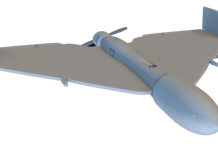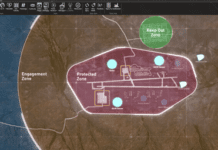This post is also available in:
 עברית (Hebrew)
עברית (Hebrew)
Engineers at Tufts University have succeeded in developing a new fabrication method to create dyed threads that change color when they detect certain gases. The threads change color when in contact with various gases, this change in color is visible to the naked eye, although a smartphone can also be used to detect the thread’s change in color in a more precise manner. The threads, that are intended to be woven into clothing, offer a washable, reusable, and affordable gas detector with life-saving military, medical, and industrial applications.
The gas detecting textiles are simple to use and to understand. There is practically no training necessary in order to comprehend the fabrics, making the technology highly applicable in most workforces all over the world. Although the fabrics detect gases efficiently, Tufts.edu mentions that there is no intent for the fabrics to replace existing technologies used to detect gases.
The fabrics were created using several chemicals and materials including, a manganese-based dye, MnTPP, methyl red, and bromothymol blue. Methyl red can be used to detect hydrogen chloride and MnTPP and bromothymol blue can detect ammonia. The fabrics are also treated with polydimethylsiloxane (PDMS), which creates a flexible seal around the thread, protecting the fabrics and the dye from water and preventing the dye of escaping the fabrics when washed. The PDMS is also capable of having gases pass through it, therefore making it possible for the fabrics to change colors.
There are even applications for the technology underwater, with the fabrics being able to detect dissolved ammonia. The PDMS works as a hydrophobic seal that keeps water off the threads, yet the dissolved gases can still reach the dye and be quantified. Washing doesn’t dilute the dye therefore the fabric is reliable for continuous use.
The fabrics change color proportionally to the concentration of the gas using spectroscopic methods. When the naked human eye fails to notice tiny changes in color, smartphones can be used to quantify the color changes and to interpret the color signatures in the fabrics.
With potentially life saving applications in medical, military, search and rescue, and other workplace fields, it does not come as a surprise that the research towards these fabrics was supported by a grant from the National Science Foundation Institutional Graduate and Research Traineeship.


























